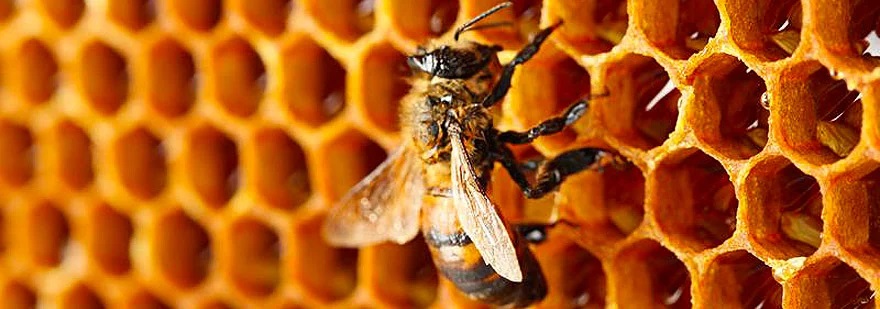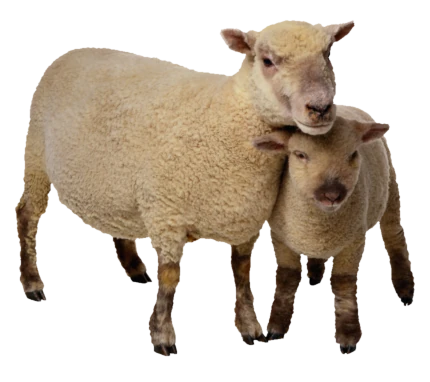Huge numbers of bees suffer in a variety of ways from their exploitation by humans to make honey and other products.
Many people may think that bees don’t suffer. However, all the evidence available indicates that they, as many other invertebrates who have a centralized nervous systems, do have the capacity to feel suffering and pleasure.2
Despite this, as happens with other animals, they are used for human profits in ways that many people aren’t aware of. Their exploitation causes suffering and death to a large number of bees. This happens especially with honey, which bees produce by swallowing nectar and then regurgitating it repeatedly. To take honey out of the bees, these animals are harmed in a number of ways, and killed in great numbers.
Bees, like many other invertebrates, can suffer
There are people who think that, although many animals suffer, there are no reasons to believe invertebrates do. This belief is understandable because most people haven’t had the opportunity to learn a great deal about these animals.
However, when we examine the issue and look at all the scientific evidence available we find that this assumption can hardly be right. There are many invertebrates who clearly satisfy any reasonable requirement for being conscious, that is, having experiences and therefore feeling suffering and pleasure. Among them are animals such as octopuses.3 In the case of other invertebrates we may have less evidence available regarding this. However, the evidence is still enough to conclude they are conscious.
This is what happens in the case of bees. These animals have nervous systems which include a brain, just as other insects and as other arthropods such as crustacea, and other invertebrates do. Moreover, these animals display an amazingly complex behavior. They communicate with each other with different types of body movements (also known as dances) to let them know about the position of flowers and where to pick pollen. They also have a great memory which allows them to remember where the flowers and the hive are.
Bees are social animals capable of learning and complex behaviours. Bees even correct their flight course due to wind drift on their way to a new source of food that another bee told them about.4 As we explain in our section on what is relevant to be morally considered, this is not what should matter in order to grant respect. What matters is the fact that they are sentient. However, they could not have these capacities if they weren’t able to have positive and negative experiences. Therefore, the fact that they have these capacities allows us to conclude that they are capable of feeling suffering and pleasure. Of course, this does not only happen in the case of bees. These animals are closely related to other invertebrates.
So if we conclude, as the evidence compels us to, that they are sentient, then we have strong reasons to conclude that many other invertebrates are also sentient. This is very important because the overwhelming majority of animals are invertebrates and many people still disregard them. To be sure, some of them (such as spounges) can’t suffer because they don’t have a nervous system, and others (such as jellyfishes) can’t suffer either because they have only radial nervous systems which aren’t centralized (and in order to suffer centralized nervous systems are needed). But there are many other invertebrates who do have centralized nervous systems and who do suffer.
How bees are used in the making of honey and other products
Honey is produced by bees by swallowing nectar, regurgitating it and then repeating this process many times. During this process, their organisms add enzymes to nectar. Bees store honey in honeycombs by regurgitating it into a cell. The cell is then “capped” with wax. This process takes place so that the honey can then be consumed by the bees in the future. It takes about 12 worker bees an entire lifetime to create a single teaspoon of honey. Bees have to visit over two million flowers to create a single pound of honey.5
The exploitation of bees is done especially for the extraction of honey, which is sold in great amounts. The use of other products also entails the exploitation of bees, and contributes to make it profitable to harm them in several ways including their killing.
To take the honey more easily hives are sometimes heated while still in the structures it was made in. However, many bees are often transported with the honey and these may simply be killed. One author involved in bee exploitation writes: “If there are no windows in the room other methods such as an electric grid can be used to dispose of the stray bees”.6
When the honey is taken from the bees and they are not killed, the bees are left without their food. As a substitute for this, bees whose honey have been taken away are fed water with sugar. It is sometimes argued that this is not worse for bees than honey. But sugar isn’t as fit for the bees as honey, and they are not properly nourished with it.
Honey is not the only product obtained through the exploitation of bees. Other products for which bees are used include venom, bee pollen, royal jelly, propolis and wax are all products that are made by bees.7

